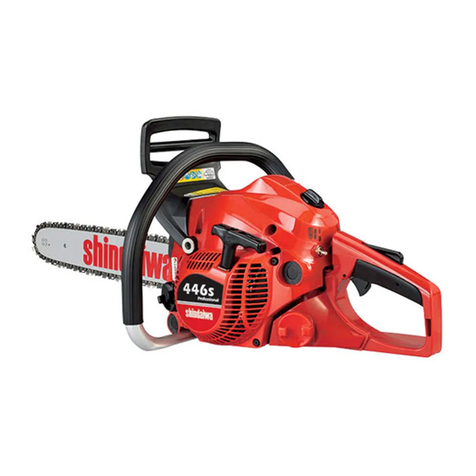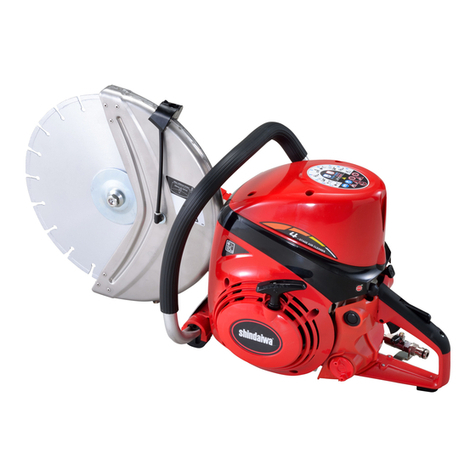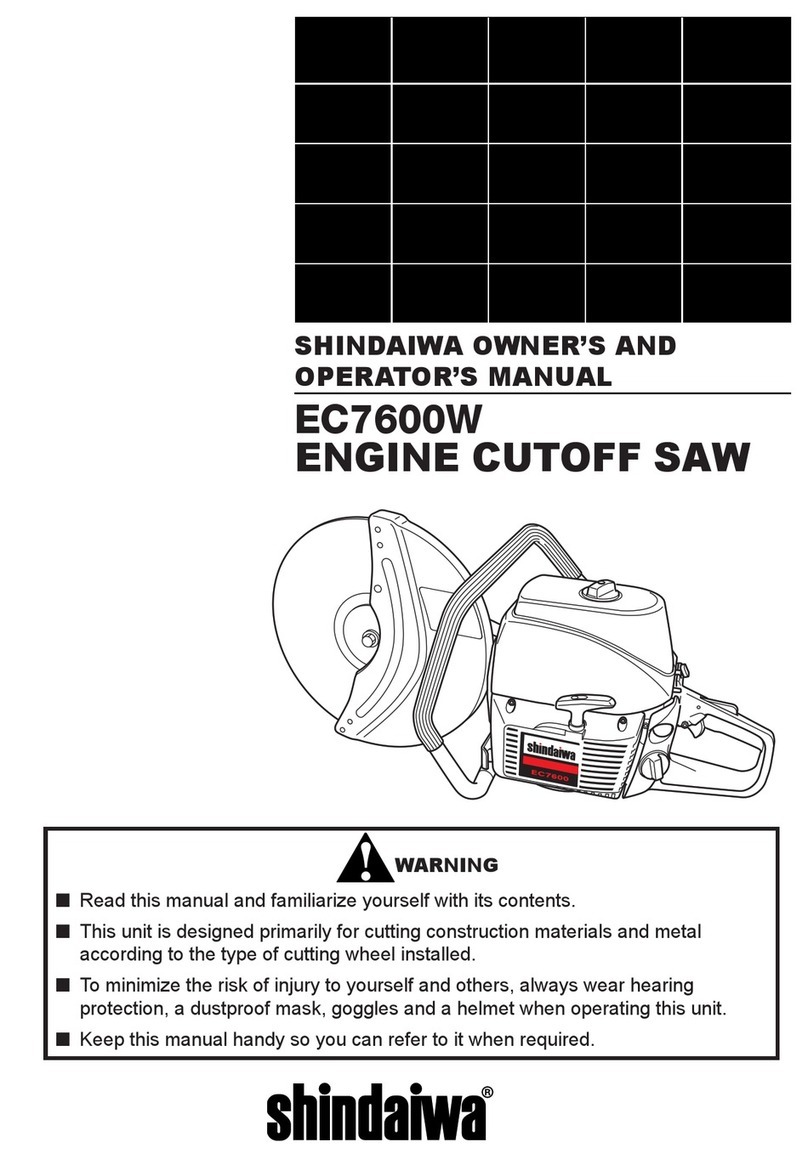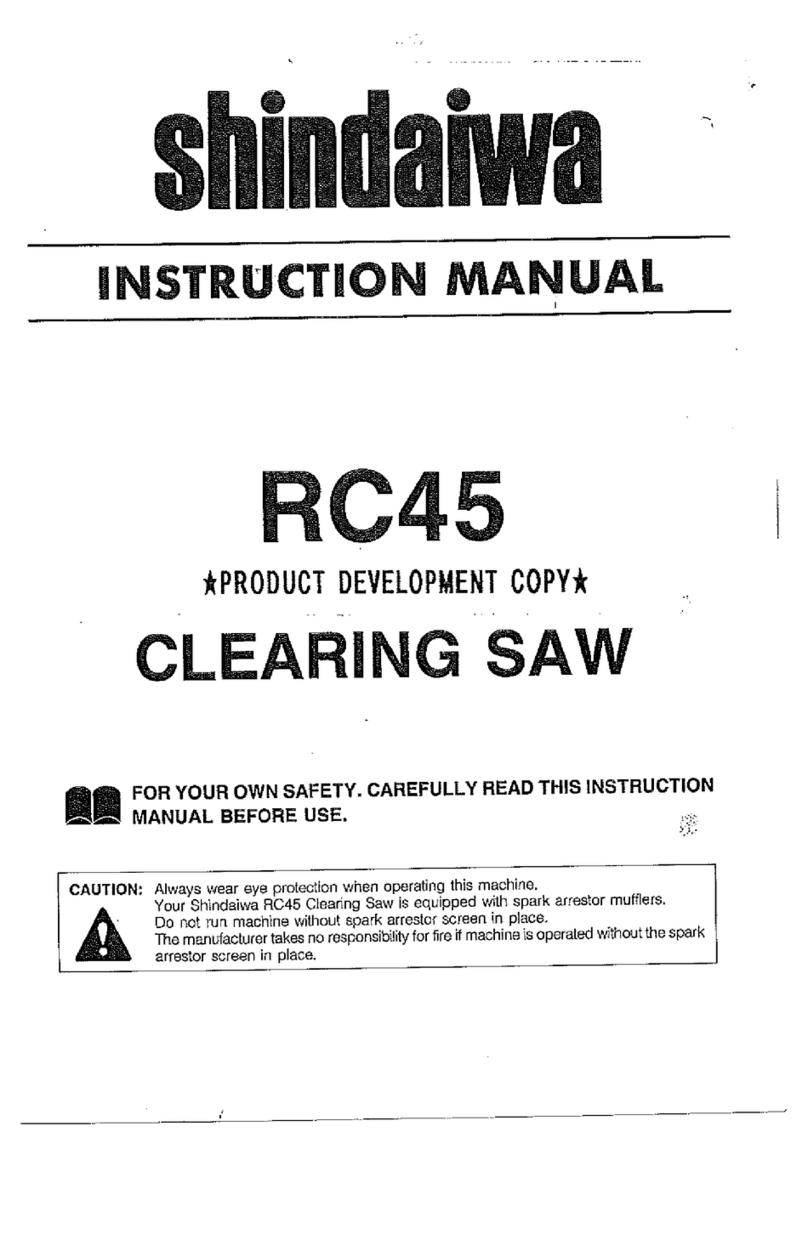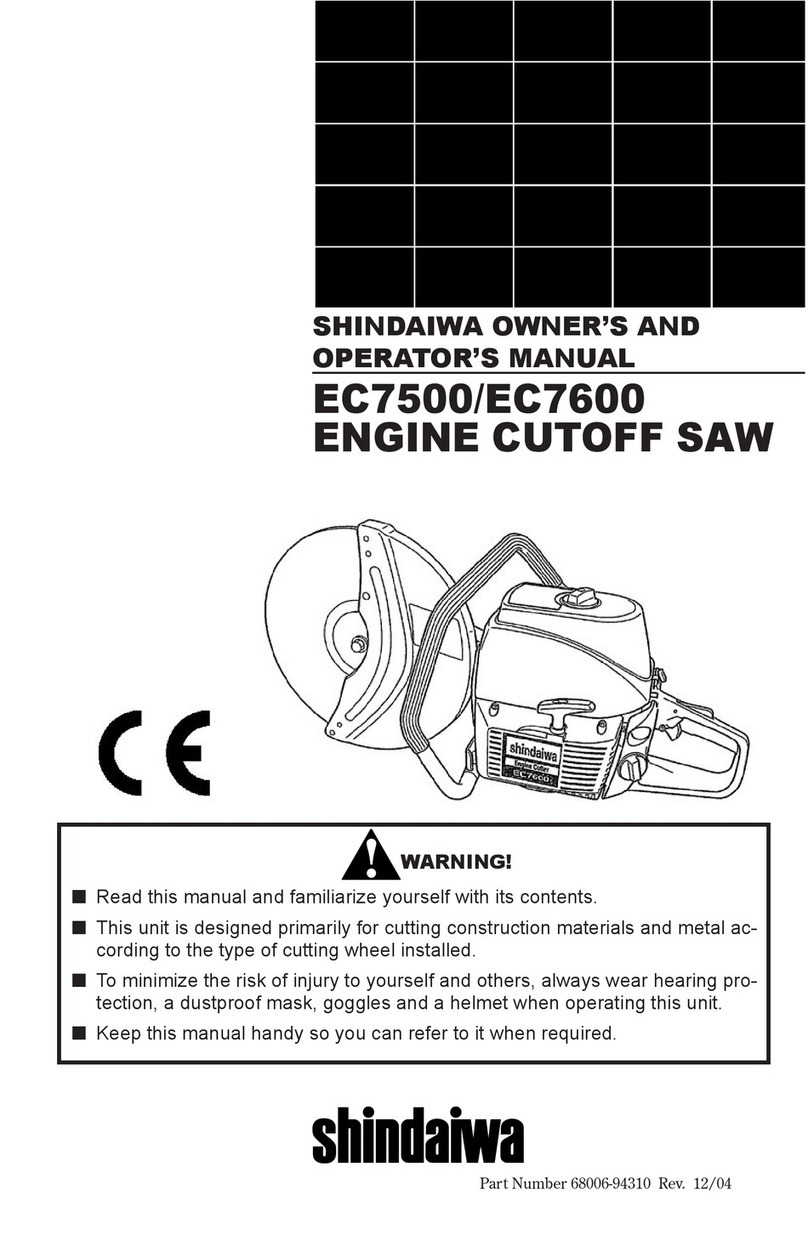3
Using this cut-off saw, or any other
high-speed power tool, can be
hazardous. As a result, you must
employ special safety precautions to
reduce the risk of injury or re.
Children and people who do not
understand this manual must not use
this unit.
Never allow other people or animals
to be near the unit when starting or
operating.
Never touch a rotating cut-off wheel.
Operate the unit only in a well
ventilated area.
Never operate the unit in a closed
area such as a room, warehouse or
tunnel. Running the unit in a closed
area may cause serious illness or
even death due to exhaust gas.
Never allow any people or animals
near exhaust gas.
Never inhale exhaust gas.
Never make unauthorized
modications or alterations to any of
the components of the unit, and never
operate the unit without the wheel
guard or mufer.
This unit is designed for one-man
operation and must be operated by
only one person.
Never operate the unit when you
are tired or under inuence of any
substance that could impair vision,
dexterity or judgement.
■
■
■
■
■
■
■
■
■
■
■
When operating the unit, always
wear snug-tting clothing, safety
gloves, safety non-skid footwear,
hearing protection, a dust-proof
mask, a helmet and goggles. Never
wear oppy clothing, shorts, sandals
or accessories that could become
entangled.
A rst-time operator should obtain
practical instruction from a dealer or an
experienced user before using the unit.
To minimize the risk of sparks igniting
clothing while operating the unit, wear
clothing made of leather, wool, tightly-
woven cotton, or cotton treated with
ame-retardant.
Never use any cut-off wheel that is
not recommended in this manual.
Do not start or operate the unit unless
you have a clear work area and
secure footing.
Do not operate the machine for more
than two hours a day in total. Do not
operate it for more than ten minutes
continuously. Due to vibration,
excessive operation may cause you
white nger disease.
Never smoke or use re near the unit
or its fuel.
Since the mufer and exhaust gas
become very hot, make sure there
are no ammable substances near
the unit.
■
■
■
■
■
■
■
■
Never run the unit if you discover a
fuel leak.
Make sure all the components are
in place and the bolts are securely
fastened.
Make sure the cut-off wheel is
securely fastened and is not
damaged. Never use a cut-off wheel
with cracks, distortion, or one that is
unbalanced.
Make sure the belt tension is properly
adjusted and the wheel guard, belt
guard and clutch cover are securely
assembled.
Always inspect the front handle, rear
handle and wheel guard before use,
and never use the unit if the parts are
damaged.
Before cutting into a material,
familiarize yourself with the risks
associated with dust, fumes, or
mists that may be generated during
operation. Make sure you provide
adequate protection against harmful
emissions. A high-performance
respirator and/or water attachment
may be required.
Do not use the cut-off saw to cut
or disturb asbestos or products
containing or wrapped in asbestos.
If you believe you might be cutting
asbestos, contact your supervisor.
■
■
■
■
■
■
■
Safety Precautions
WARNING!
Before Operation
Mixing fuel and engine fueling must
be done outside, and where no other
combustibles are nearby.
Open the fuel cap slowly to release
any possible build-up of pressure.
■
■
Never refuel when the unit is hot.
Allow to cool before refueling.
Never fuel when the engine is
running.
■
■
After fueling, wipe all spilled fuel.
Cutting metal may cause sparks from
the cut-off wheel and may ignite spilled
fuel which could result in serious injury.
■
WARNING!
Fueling the Unit

